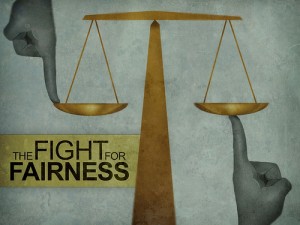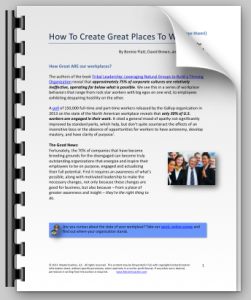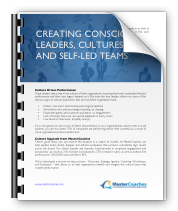The client is a senior executive in a large organization where firing an employee is a long and distracting process making
it not worth most people’s efforts.Typically those employees are tolerated or moved around if possible. Besides the loss of a productive opportunity, there’s another usually overlooked loss because it’s rarely just “a lone difficult employee.” That person is invariably connected to their own little grapevine, and whether cause or effect, the impact on the organization goes much deeper. When it gets to a point where the boss feels drastic action must be taken, despite the arduous road that entails, it’s a lose-lose situation. But what if this thorny task could be transformed into a breakthrough opportunity for the entire team? Rather than strive to get from bad to not bad, why not unlock potential and ignite a movement? Here’s an example of what that could look like:
- I ask my client how he perceives the challenging decision before him. He foresees a political necessity to try to integrate the employee into the newly forming team, and hopes he can stave off
his damaging behaviors (like speaking negatively outside of the group).
- I ask what actions he’s likely to take, given his assessment of the situation. He will talk to him 1:1 about why this is destructive to the whole organization, and be clear about what behavior is appropriate.
- I ask what the predictable outcome is. He’ll be angry and sullen. It will just fuel his anger. The attempt won’t help.
Mostly we don’t even bother to step back this far and try to be objective about the situation. Even then would, or could, my client do anything differently? Would you? Usually the answer is no, not because they can’t see the crash coming, but because it’s all they can see.
In this case I had given my a client an exercise to do regarding clarifying his core values. The intention was to use those as a guide when making decisions. The concept is simple, but it’s a more uncomfortable process for most people than they imagine.
The next question was about the executive’s own core values. This is what he shared:
- Learning.
- Integrity/selflessness (doing the right thing).
- Actualizing potential.
What behavior would be driven from those values, I asked? The first cut was that he would speak to him emphasizing more selflessness for the team’s success. Stress all the potential he has to help them all succeed.
I asked if that was as good as it got? It was authentic. But was it enough? Was he really connected to the aspirational nature of his core values? Was he being his best self, on purpose?
When really in touch with core values like learning and actualizing potential he might be curious about his employee’s own core values? How could he learn about that? By asking him about what it is that he’s so angry about. Really be curious and create a space for an honest answer. Then delve deeper with each answer, inquiring about why that was meaningful until you hit that place where that’s all there is.
Then you’ve discovered, together, what is really important to that person, a core value worth losing a job over.
Ultimately what was paramount to the employee was pride in his work, recognition, and a sense of fairness. He’d spent a lot of time and effort creating processes and building his reputation. He felt that in one fell swoop this new boss destroyed all his good work. Even though the decision to alter this employee’s role came from above, no one had even taken the time for this level of conversation. Another client remarked to me how this level of conversation is just not normal for them. But it is for great leaders!
And now for the interesting twist, the “Twilight Zone moment.”In working through this process the executive noticed that he and this employee had a lot in common. He too felt he was being treated unfairly. The gossip mill was characterizing him as this bully, an outsider who came in and upset the cart without regard for the people. And he felt helpless to change that, despite his efforts. He now knew exactly how this employee felt! They had something to align around. And a relationship to build upon. Now a new story could wind it’s way through the grapevine and ignite positive change.
Go ahead and apply the steps above to a challenging decision you’re facing. See what difference it makes switching from your default mode to acting from your core values. Share your story, we’re sure it will be a good one!









Social Links